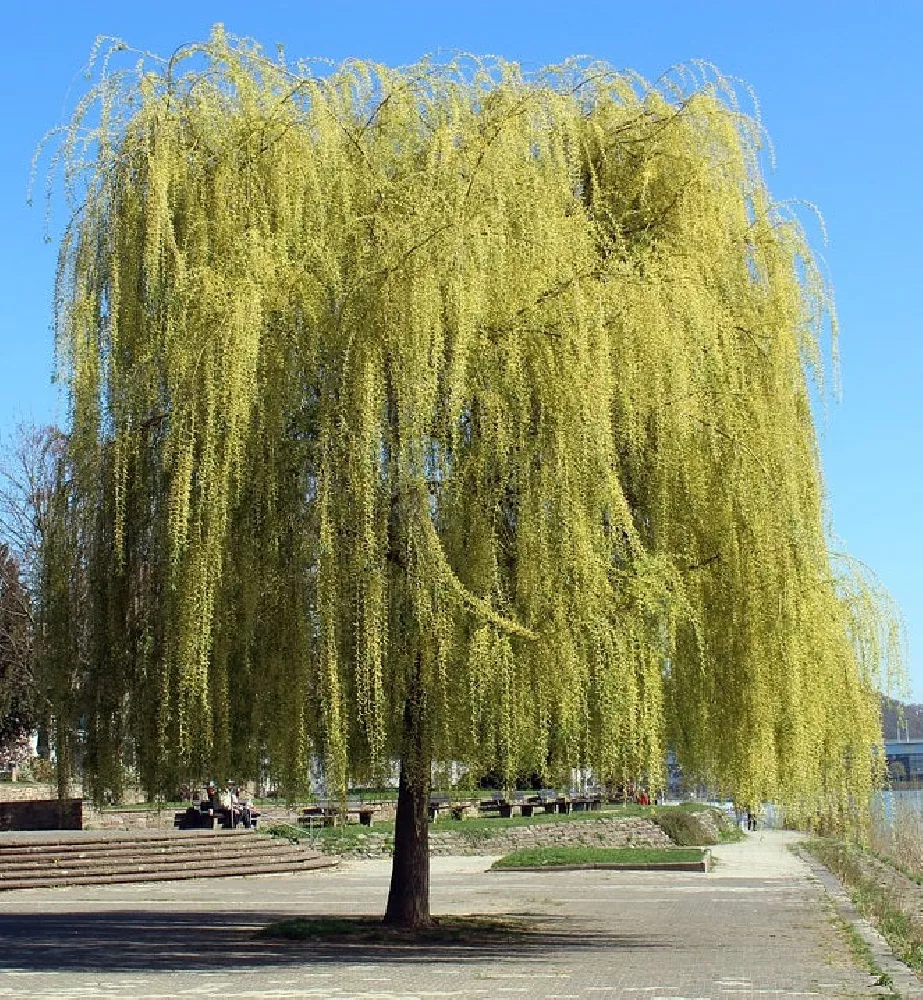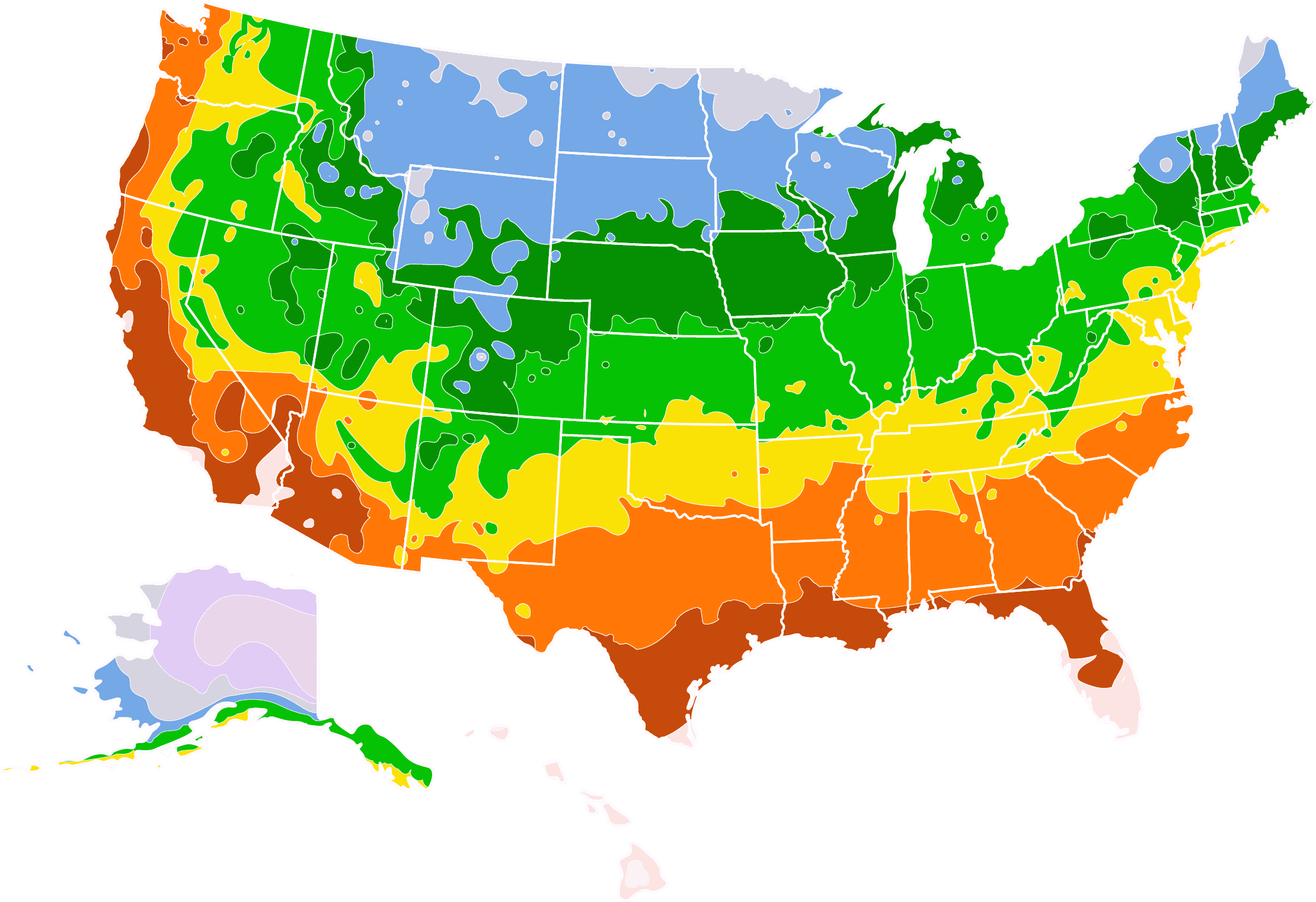- Home >
- Ornamental Trees >
- Weeping Willow Trees
Weeping Willows for Sale
- Ships in 1-2 days
- 1-Year Warranty Eligible
- Pots or accessories are not included unless specified in the product options.
Shipping Details:
Once your order is shipped, you’ll receive an email with a tracking number and estimated delivery date. Most orders ship immediately, but some items are seasonal and may only ship in spring or fall. These products are noted on the website.
Weeping willow trees are graceful and refined, making them a wonderful choice of tree for many landscapes. The tree’s branches and leaves open from its crown, creating a sweeping effect on the ground. The willow has light-green to gray leaves and can grow to over 40 feet tall. Weeping willow trees are an icon due to their dramatic appearance.
- Can grow over two feet per year when young.
- Grows best when planted near water.
- Excellent source of shade.
Plant Care
Sunlight

Weeping willows need at least four hours of direct, unfiltered sunlight per day.
Watering
Young weeping willows should be watered weekly, while mature trees only need to be watered when the topsoil feels dry.
Fertilizing

A fertilizer with a balanced NPK ratio, such as 20-20-20, is ideal for weeping willows.
Planting and Care
Planting instructions
Choose a growing site that receives full sun to partial shade. Although weeping willows are tolerant of most soil types, it is best to plant your tree in a moist, well-drained, and slightly-acidic soil. Once you have chosen the location, dig a hole as deep as the root ball and twice the width. Place the root ball into the hole and backfill with soil, breaking up clumps around the sides. Slowly pour two gallons of water into the hole. Then, fill it with more soil and gently tamp.
Watering and nutrients
Your new weeping willow will require weekly waterings for the first year. Mature plants will only need to be watered when the topsoil feels dry. Weeping willows do well when planted near ponds and lakes. You can also plant near or even in flood-prone areas, though you should avoid sites that exhibit stagnant drainage conditions. A mature weeping willow does not require fertilizer if planted in nutrient-rich soil and its leaves are green. However, you can always supply compost or all-purpose fertilizer to amend poor soil and support lush growth.
Pruning
When your weeping willow tree is young, prune it regularly, leaving only one central leader. In order to prevent breakage and wind damage, the tree should be trained to have wide branches. Thinning the crown encourages air circulation, which in turn prevents disease from excessive moisture. In early spring, before new growth emerges, you can lightly prune between branches near the top of the tree. This will promote healthy new growth throughout the summer.
Pests, diseases, and animals
Weeping willows are susceptible to a number of pests and diseases, including borers, aphids, and the gypsy moth. Controlling pests on a large tree can be difficult, but target spraying often yields positive results. To control and trap gypsy moths and their hungry larvae, tar paper or other sticky materials can be placed on the tree. Young willows may also attract deer, rabbit, and elk. Place a collar around young trees to prevent animal damage.
Fun Facts

FAQs
Where should I plant a weeping willow tree?
Although a willow may tolerate drier soil, it prefers a moist location. Planting your weeping willow near a body of water is both iconic and favorable for the tree. Grassy lawns—especially those that harbor standing water—are another great location for Willows. Avoid planting the tree too close to underground pipes, septic tanks, and wells, as the roots seek out water with veracity. Keep a 50-foot distance between your house and your new willow tree.
How big do weeping willows get?
Weeping willows can grow to heights of up to 50 feet in prime conditions, but most individuals end up between 30 and 40 feet. Its recognizable crown of cascading leaves and sweeping branches can reach a width of 35 feet wide. Weeping willows grow quickly, sometimes at a rate of over two feet per year. Only plant your tree in a location that can handle its immense size. The weeping cherry and the weeping juniper are smaller trees that also feature the characteristic weeping foliage.
When should you plant a weeping willow?
You will want to plant your weeping willow tree in the fall. This will allow its roots to establish over winter. Apply a three inch layer of mulch to defend the roots against frost damage. Be sure to plant during pleasant conditions and before heavy rain begins. Spring planting is also an option if your soil is thawed and workable. Avoid planting during the heat of summer, as the tree may not be strong enough to handle the heat.
Do weeping willows attract mosquitos?
Weeping willows do not attract mosquitoes. While the trees do attract an array of insects, but not mosquitos. If anything, willows may reduce the amount of mosquitoes in an area, because they use up standing water sources that may draw the insects near. The water consumption of weeping willows has the ability to reduce standing water levels around low areas in your landscape. The trees may be associated with mosquitoes due to willows often being planted near large bodies of water.











